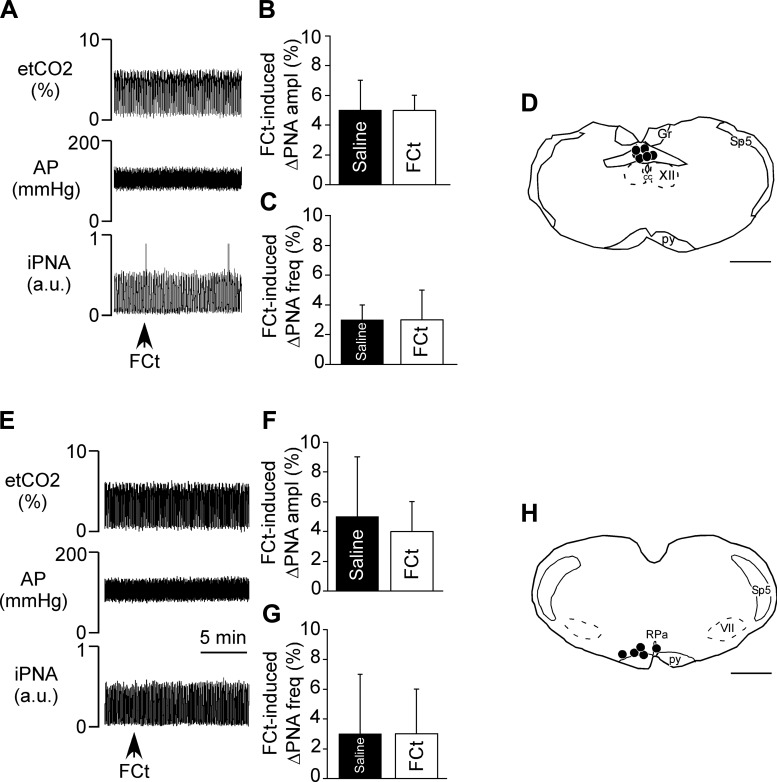Fig. 5.
Injections of fluorocitrate (FCt) into the commissural nucleus of the solitary tract (cNTS) or raphe pallidus (RPa) failed to stimulate breathing. A: recordings of end-expiratory CO2 (etCO2), arterial pressure (AP), and integrated phrenic nerve activity (iPNA) in urethane-anesthetized and artificially ventilated rats show that injection of FCt (1 mM, 50 nl) into the nucleus of the solitary tract (NTS) did not affect AP or respiratory motor output. B and C: summary data show that NTS injection of FCt had no effect on PNA amplitude (ΔPNA ampl; B) or PNA frequency (ΔPNA freq; C). D: computer-assisted plots showing the center of fluorescent microbeads within the NTS. E: recordings of etCO2, AP, and iPNA in urethane-anesthetized and artificially ventilated rats show that injection of FCt (1 mM, 50 nl) into the RPa did not affect AP or respiratory motor output. F and G: summary data show that RPa injection of FCt had no effect on ΔPNA ampl (F) or ΔPNA freq (G). H: computer-assisted plots showing the center of fluorescent microbeads within the RPa. Scale bars in D and H, 1 mm.

